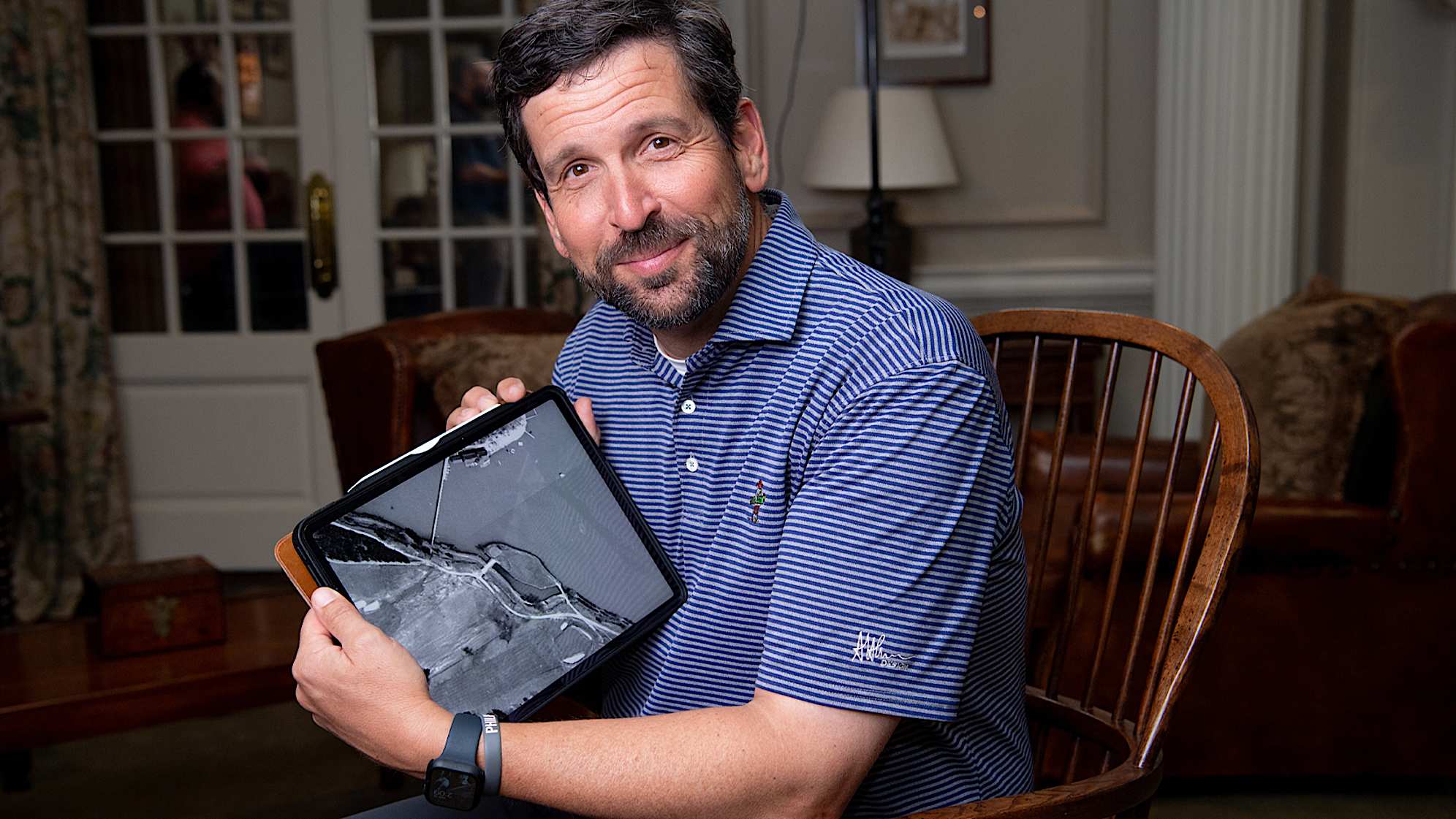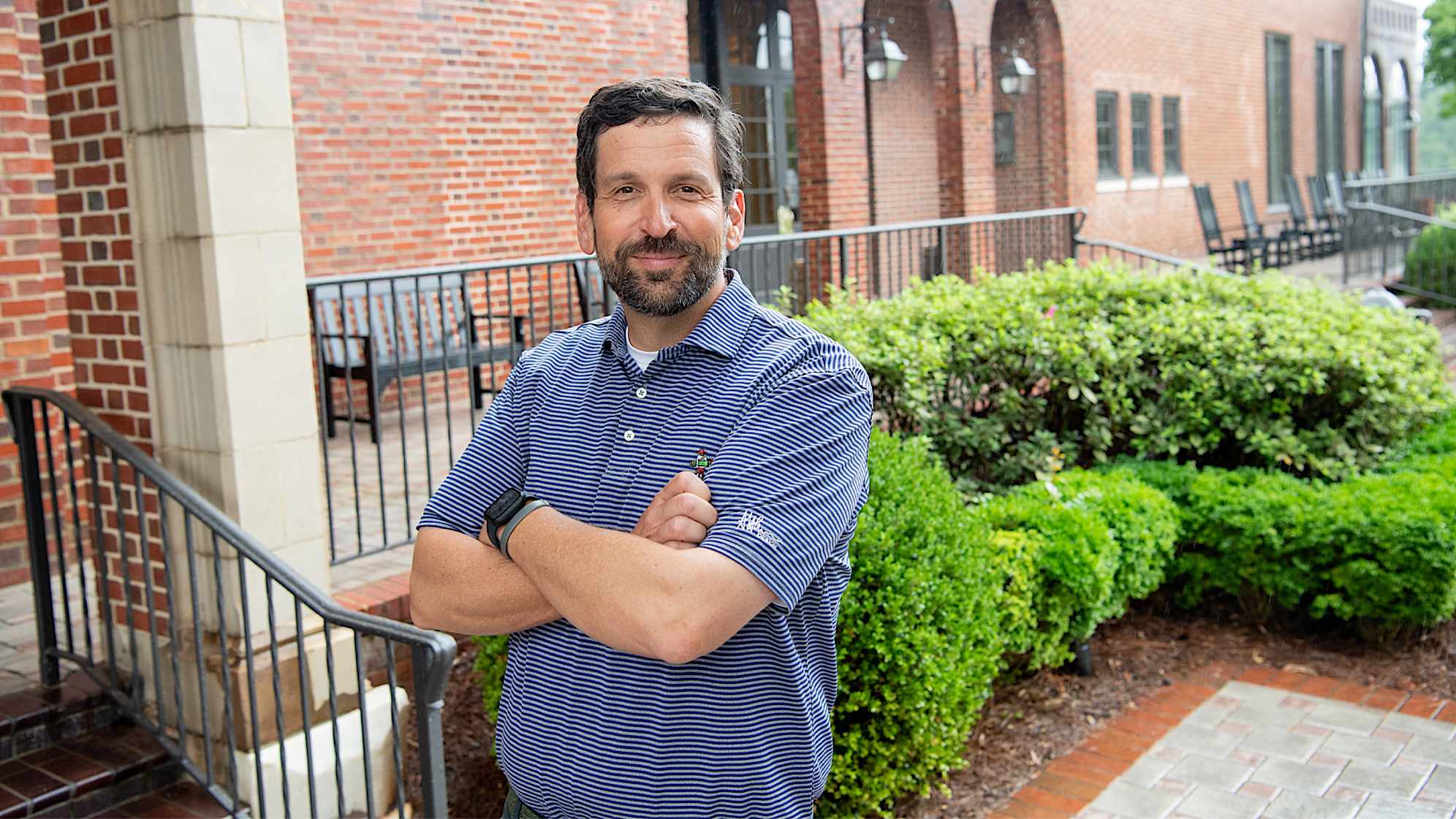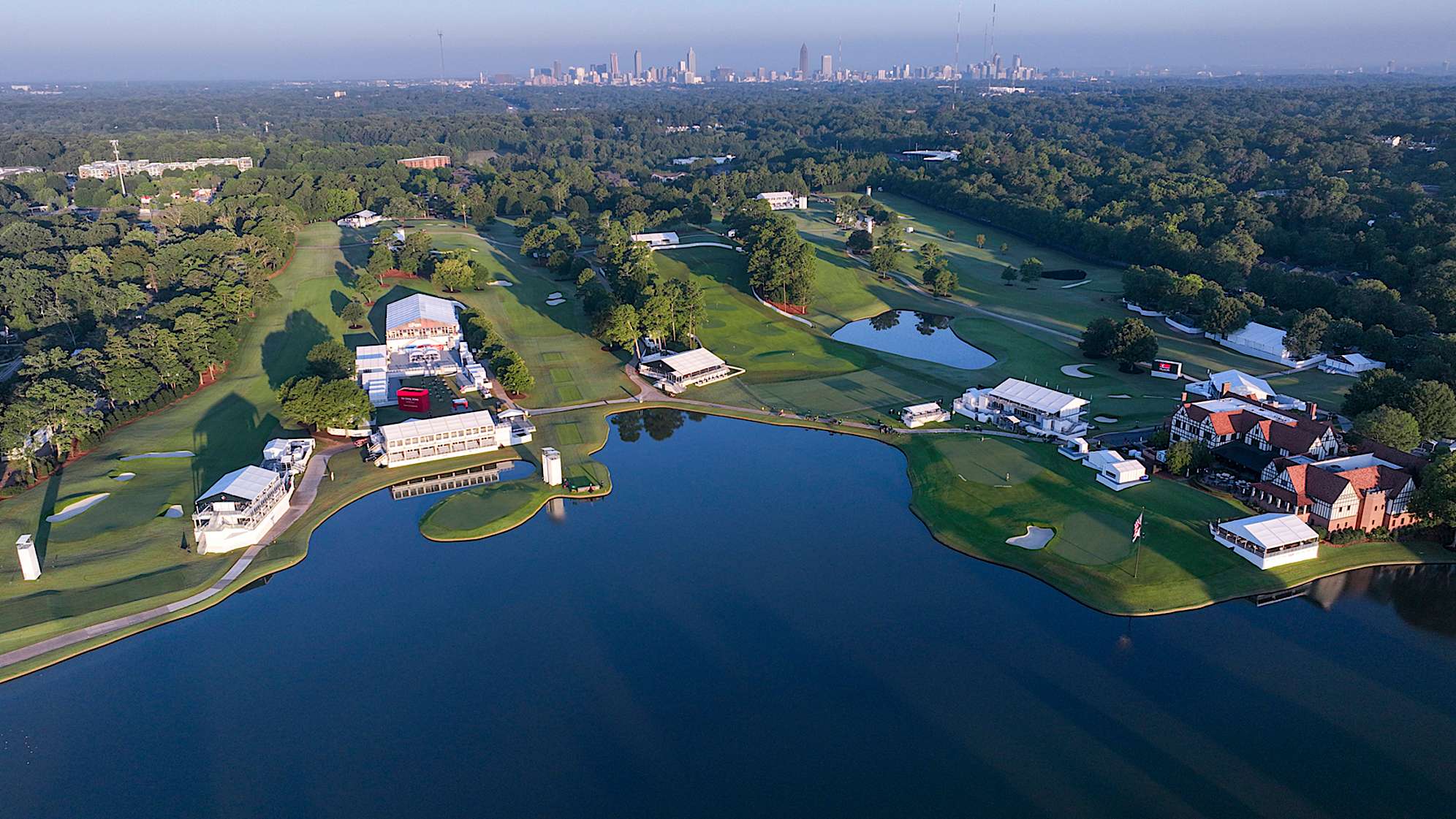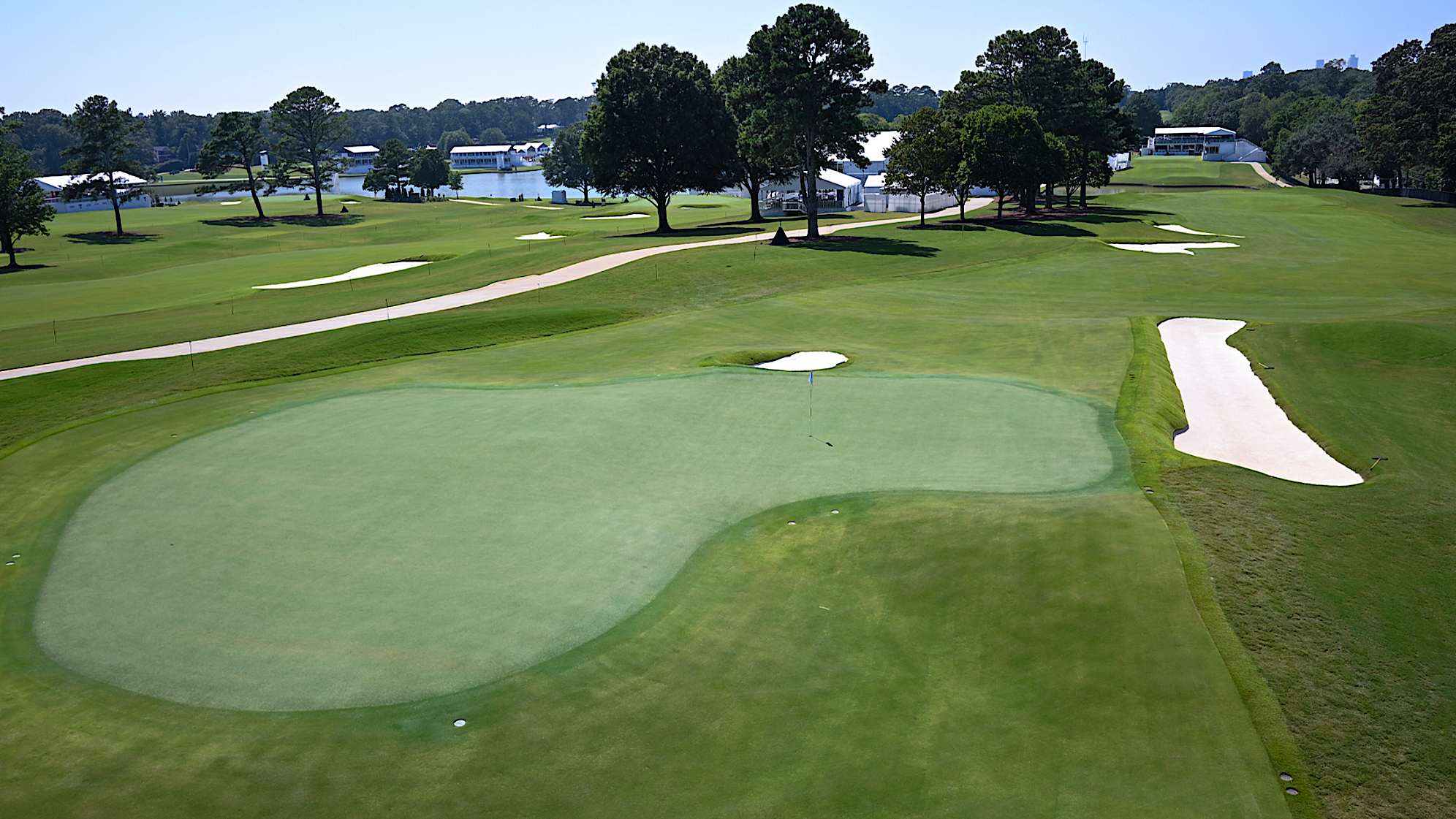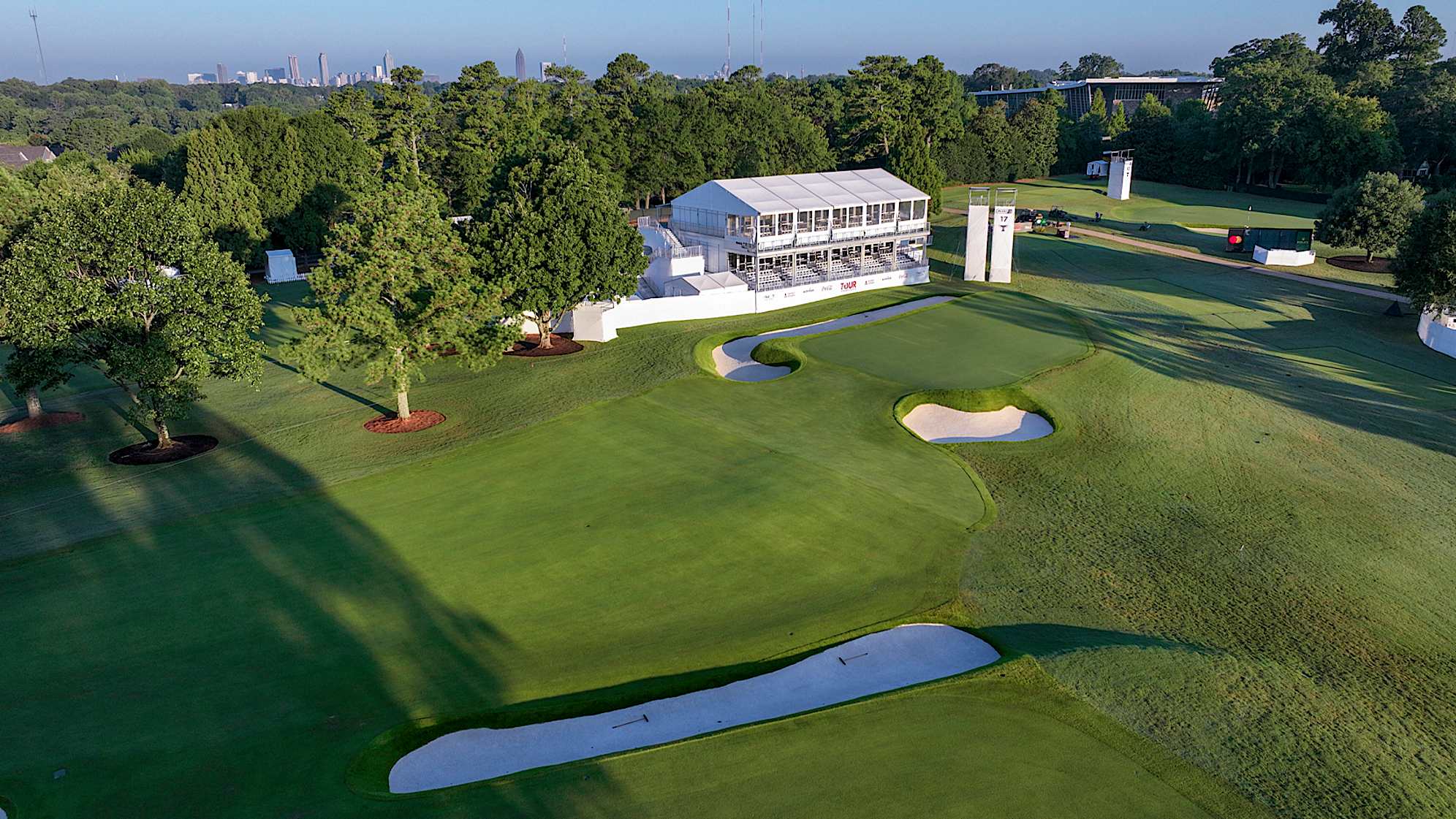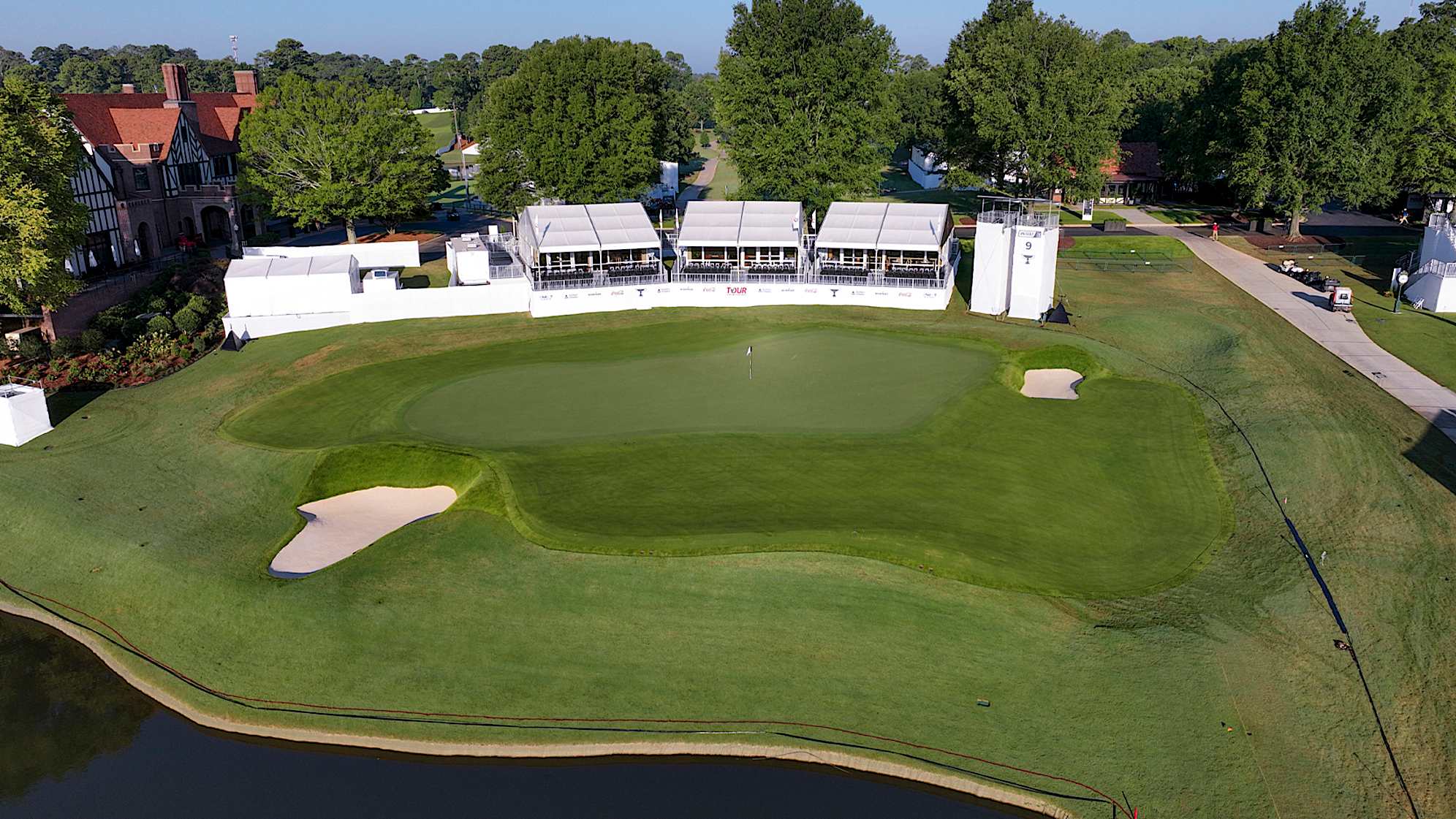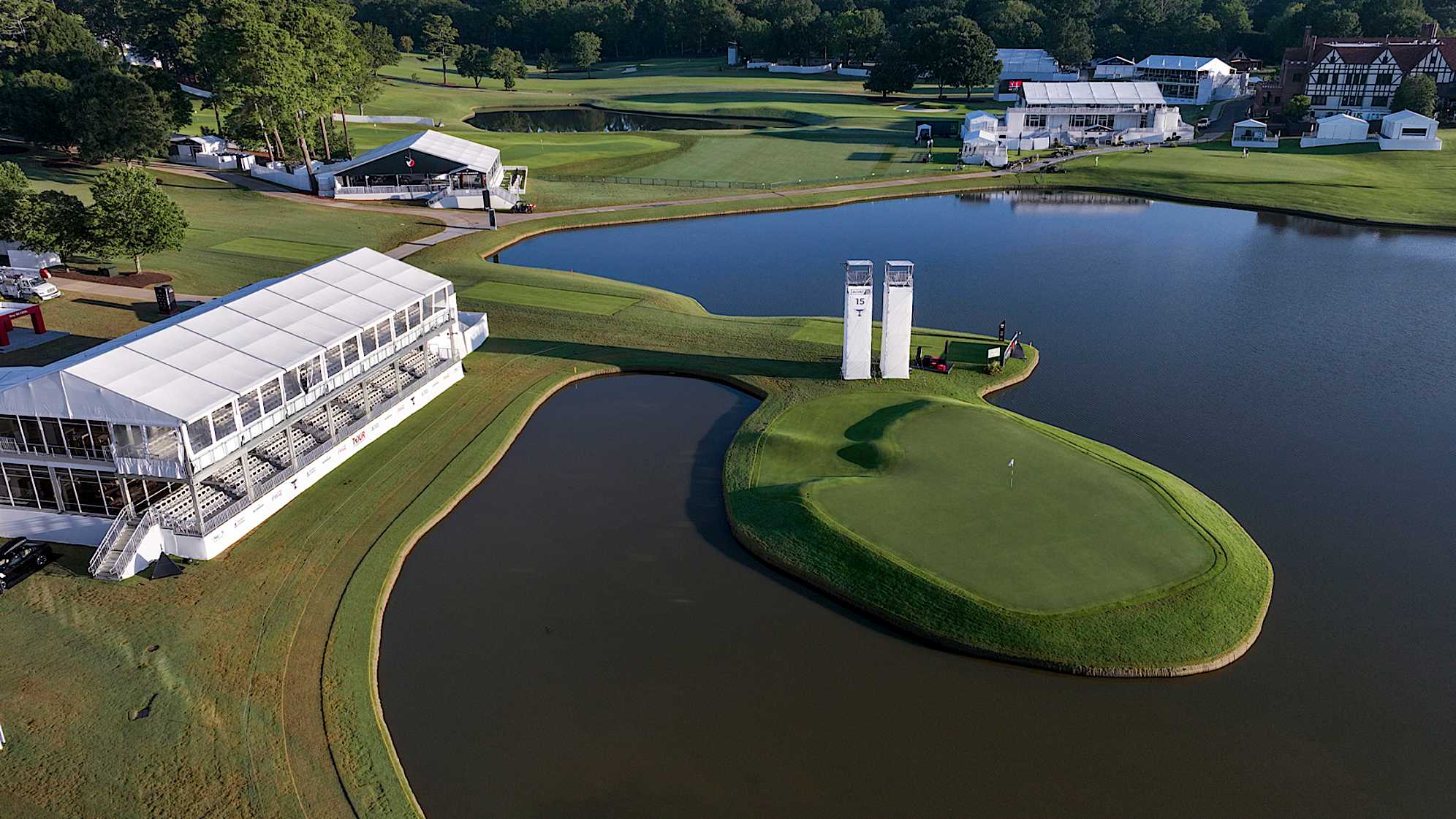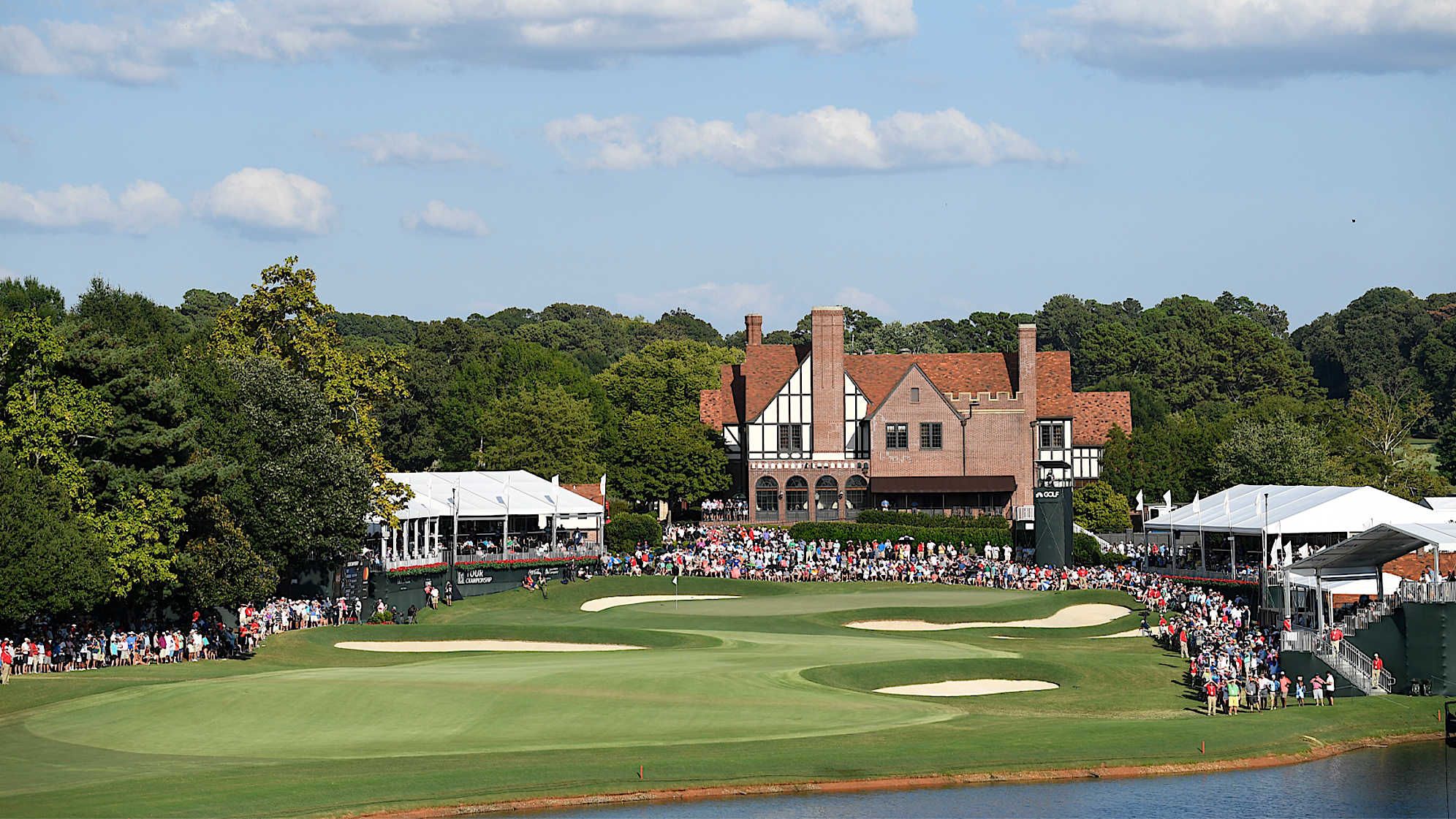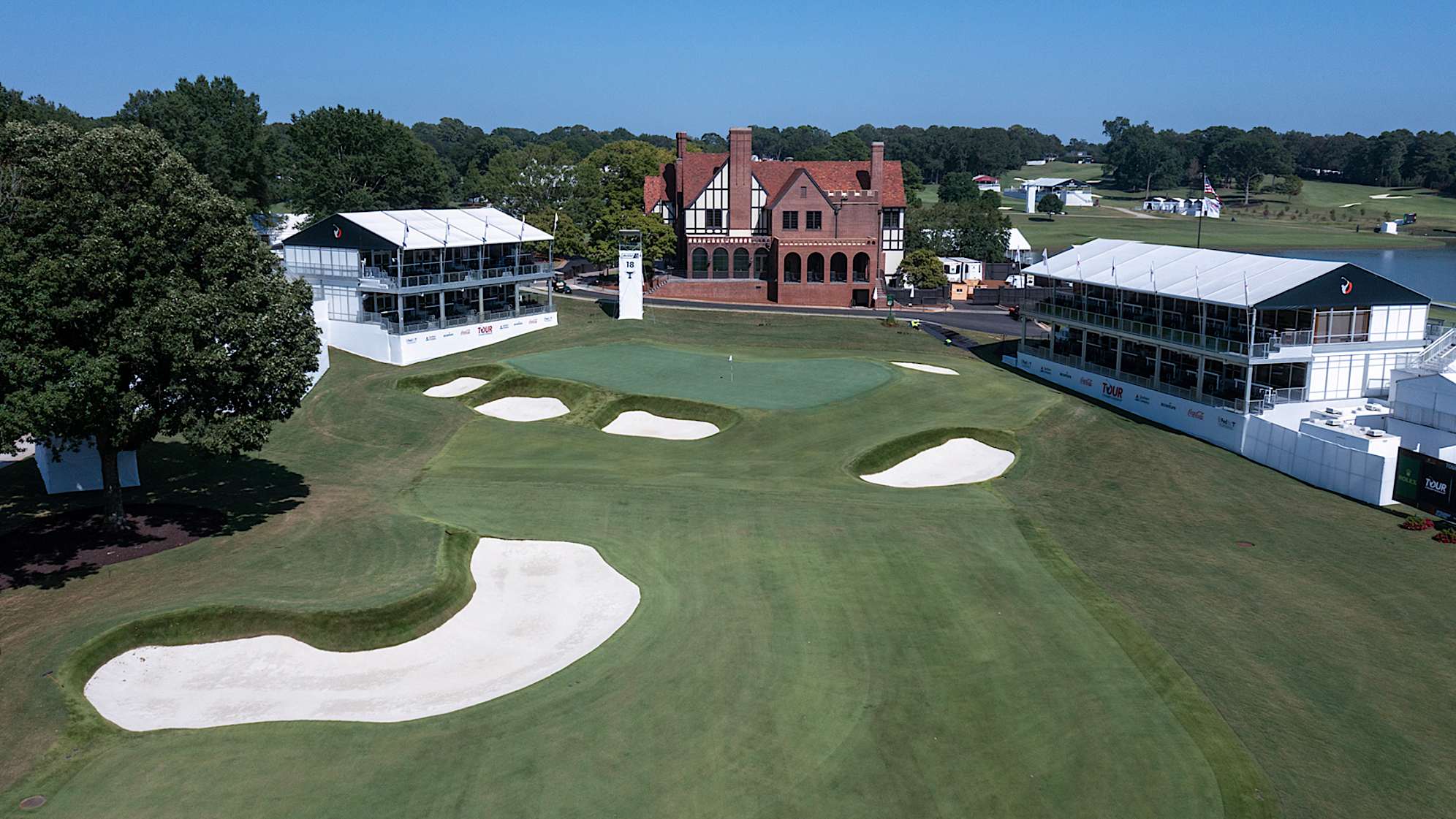Everything old is new again: The story behind East Lake's historic restoration
Written by Sean Martin
Club’s restoration, which will be unveiled at this week’s TOUR Championship, harkens to proud history
ATLANTA – It was a dreary winter day when Chad Parker led Andrew Green into the basement of East Lake Golf Club’s clubhouse. Green was making one of his first visits to the club, but before he did any digging in the dirt, he wanted to sift through the club’s extensive archives.
Parker, East Lake’s president and general manager, gave Green a quick tour before returning to his office and the duties of his day job. Hours later, as Parker prepared to leave for the day, he realized that the man charged with bringing East Lake’s prolific history back to life was still underground, immersed in the details of the club’s storied past. Parker made sure to grab Green some sustenance before packing up, as Green’s passion for his work had led him to overlook his most basic needs.
“I just realized, This guy hasn't eaten all day; how can I be hospitable and help him out?” Parker said. “I don’t know how long he was in there. I left and told the guard, ‘When that car’s gone, you can lock the building up.’”
Green is one of today’s top architects thanks in large part to the work he’s done restoring other Donald Ross classics like Inverness Club in Toledo, Ohio, and Oak Hill Country Club in Rochester, New York, site of last year’s PGA Championship. Green calls East Lake an “amazing oasis of history,” and his efforts to return the club to its roots will be unveiled at this week’s TOUR Championship.
The top 30 in the FedExCup will be among the first to play a course that looks dramatically different than it did 12 months ago. Green’s restoration harkens back to East Lake’s golden age, when champions like Bobby Jones and Alexa Stirling were roaming the grounds, while promoting more compelling competition for the best players of today.
“We wanted to make sure we created extra opportunities for exciting golf,” Green said.
What once was a one-dimensional test will now promote more variance in scoring and will challenge players in a variety of ways.
Circular putting surfaces with steep back-to-front slope have been replaced by greens with unique slopes and shapes. Players will need to decide if they’re brave enough to attack pins set on plateaus and small fingers protruding from the greens.
Some putting surfaces, like on Nos. 5 and 6, have been moved to give holes more character and curve. The bunkers have a classic look, with Green restoring the grass-faced traps that were more common in Ross’ day.

Check out the newly restored No. 2 at East Lake Golf Club
Instead of being pushed to the edges of the fairways, ready to catch wayward shots, the traps are cut into the landing areas, forcing players to decide if they’ll play over, around or short of the sand. There is more movement in the fairways, as well, and added humps and hollows.
“I think there's a lot more variety around the course and a lot more decision making,” said eight-time PGA TOUR winner Stewart Cink, an East Lake member. “Golf is a complex sport and there's some complexity around the golf course that you have to deal with. Decision making is going to be rewarded.”
The eighth hole was turned into a short (and potentially drivable) par 4 to add excitement as players near the turn. And No. 14, once a long par 4, has been stretched into a par 5. Views of the course’s namesake body of water and the Atlanta skyline also were restored throughout the course.
When the club went searching for an architect to bring back the course’s earlier look, it didn’t take long to realize Green was the man for the job. Parker recalls their introductory phone call, which he expected to last five minutes, stretching for 45 instead. Green already was well-versed in Ross’ work and understood East Lake’s place in the game, both as the venue for the TOUR Championship and the catalyst for change in an East Lake community that was once riddled with crime and drug use. East Lake is now a shining example for the “purpose-built communities” model that has transformed cities across the country.
“We're constantly evolving in terms of who we are, but we also remember who we were in the past and what happened here,” said Parker, who calls the club “historic but progressive.” The same could be said of Green, whose work has produced courses with a classic look that still challenge modern players. An ardent student of history, he also listened to rap artists like Ludacris and Outkast while shaping East Lake’s greens, continuing his tradition of using local artists for auditory inspiration.
As his extended basement session suggests, Green has a reputation as a voracious researcher, using historic documents to drive his work. The original documentation for Ross’ design, though, was likely lost in a fire that destroyed East Lake’s clubhouse in 1925. That sent Green looking for other resources.
Century-old newspaper articles and the writings of Jones’ biographer, O.B. Keeler, were crucial, offering accounts of strokes that Jones played on the course. Keeler’s description of a heroic shot Jones played from a “chasm” right of the 16th green led Green to build a steep drop-off there.
He also did extensive interviews with Tom Cousins, the man credited with resuscitating East Lake in the early 1990s, and Charlie Harrison, another of East Lake’s great amateurs who played alongside Jones. Harrison recalled that the bunker short of the par-3 11th was the deepest on the course, inspiring Green to revive the punishing pit.
The driving document for Green’s work was a 1949 aerial of the course, one that Green uncovered by scouring government databases.
“The photo was almost high-definition quality, incredibly sharp,” said Green. “You could blow it up and really see a lot of detail.”
He’s found that the years following World War II offer some of the best aerials, likely because of tactics and technology refined during the war. That was the case with this crisp photograph from the air above East Lake, which helped guide Green’s decision-making. (Eventually such photos were replaced by satellite imagery, which isn’t nearly as crisp.)
The photo of East Lake not only showed the state of the course in the middle of the 20th century but also the remnants of features that had been buried with the passage of time. The Great Depression muted many courses’ most distinct features because of the cost to maintain them, but the photo showed details like the scar of a road that used to run through the course, plus a trench bunker on the 17th hole that was a remnant from Civil War encampments. Green restored that, creating a long, narrow trap that bisects the hole.
The East Lake preserved in that photo still had a lot of the original Ross features, but it was about to undergo several changes. George Cobb renovated the course to make it more challenging for the 1963 Ryder Cup. Then, as the surrounding neighborhood declined in the ensuing decades, so did the club. Cousins devised a plan to resuscitate it, bringing in Rees Jones to breathe life back into the course.
What remained was a course that was challenging enough to host the TOUR Championship but also had become repetitive and predictable, a series of straight fairways and circular greens devoid of identifying features. The front nine ran up and down the hillside above the lake. The back nine offered little more variety, even if it benefitted from more recognizable holes like the island-green 15th and the par-5 18th.

Check out the newly restored No. 18 at East Lake Golf Club
The aerial photograph from 1949, combined with on-the-ground photography shot before the pre-Ryder Cup renovations, gave Green a good sense of the old East Lake, but it also gave him room for his own interpretation. The old eighth green ran back up the hill, away from the lake, but he created a short par 4 with a green flush against the water and several strategically placed traps that will require deft navigation to avoid. The green also was moved closer to the tee.
The East Lake of 1949 showed two greens on each hole, one Bermudagrass surface for warm weather and another built with a cool-weather grass. Sometimes the greens were adjacent to each other. On other holes, they were set far apart. Building two greens with two grasses wasn’t an option for Green, but he designed putting surfaces that paid homage to that history and bisected several of the new greens with ridges.
The first hole used to have a green flush against Alston Drive, which borders the course. While it wouldn’t be wise to build a green that close to a road today, Green designed a two-level putting surface with a small bunker in front to emulate the pair of putting surfaces that used to be on the hole.
The next hole offers an even more dramatic example. The green in the aerial photo is shaped like a diamond because the two putting surfaces are triangles pointing in opposite directions. Green recreated that shape and ran a ridge through the middle of the green.
It illustrates how the new greens will introduce a wider range of scores.
When the hole is placed in the front-left, players can use the ridge to funnel shots toward the target. Flags on the back of the green will be protected by that ridge, requiring players to take an aerial approach to that back plateau. They’ll have a smaller landing area to access that hole location, and the short grass at the rear of the green could send off-target shots even farther away from the flag.
“The old East Lake, the ball's not rolling anywhere,” Parker said. “The golf course is going to play more extreme because of the roll.”
Adding short grass around the putting surfaces is another way Green hopes to increase variability in the scoring. It not only gives players more options for recovery shots, but it also requires them to put more thought into their approach shots by increasing the penalty for straying from their target. East Lake’s prior iteration – with back-to-front sloping greens and thick rough – meant balls wouldn’t travel far from their landing spot.
In that vein, the lone bunker was removed from East Lake’s most famous green, the island 15th. The putting surface is now shaped like a mitten, with the left bunker replaced by a chipping area behind the green. There’s no more sand to serve as a soft landing spot for wayward shots. Instead, the slope behind the green could repel shots into the water. Green said the putting surface now looks even more intimidating than before.

Check out the newly restored No. 15 at East Lake Golf Club
“Eliminating the bunker makes it feel like there’s not a place to miss,” he said. “It’s either green or hazard. The back of 15 and the shape of the green is very reminiscent of its history.”
It’s another example of how East Lake is moving forward by going back in time.

.jpg)
